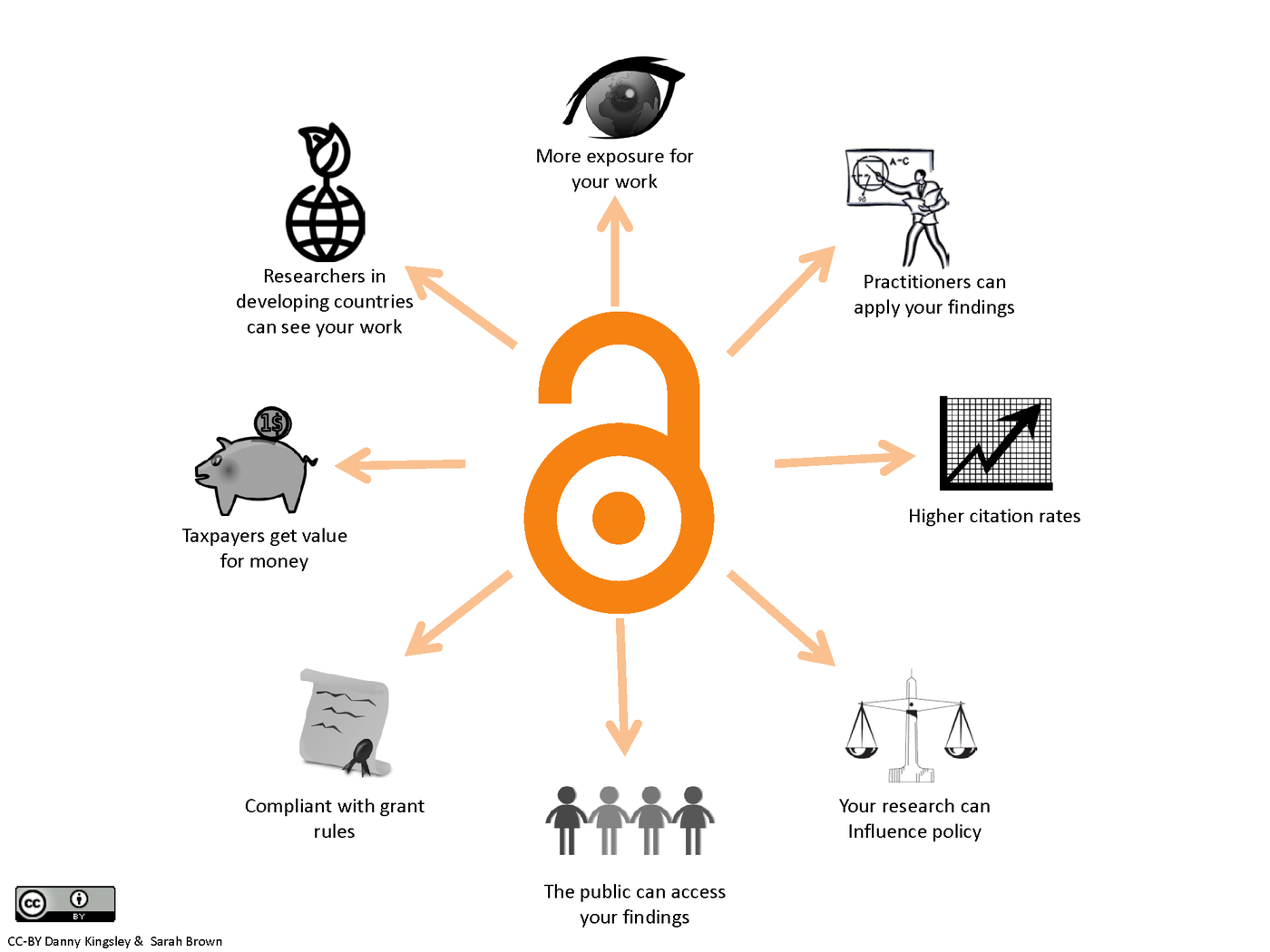Understanding Open Access
The term “Open Access” was first used in February 2003 in the context of the Budapest Open Access Initiative. Further important guidelines defining the central idea and terminology of the Open Access paradigm are the Bethesda Statement on Open Access Publishing of June 2003 and the Berlin Declaration on Open Access to Knowledge in the Sciences and Humanities from October 2003. These so-called 3 Bs (Budapest-Bethesda-Berlin) have shaped today‘s understanding of Open Access.
Ideally, according to these documents, works and papers published Open Access should meet the following two requirements:
- The authors and copyright owners of such works or publications irrevocably grant all users worldwide permanent access to their work and––via any digital medium and for any responsible, lawful use––permit users to copy, use, distribute, transfer and publicly quote or broadcast the work, and to adapt it for publication, as long as original authorship is acknowledged and stated correctly.
- The authors deposit a full-text version of the work plus any additional materials, including a copy of the above rights, in a suitable electronic standard format, into at least one online archive (publisher’s platform, repository) and thus publish the work. This archive should apply appropriate technical standards (such as those specified by the Open Archives Initiative) and be operated and maintained by an academic institution or society, by a public institution, or by an organization of similar reputation, whose aim it is to enable free availability, unlimited distribution, interoperability, and long-term preservation
In order to meet these requirements, authors have two options:
- Gold Open Access: primary publication of research results in OA publication media.
- Green Open Access: subsequent or simultaneous deposit of publications/works into (institutional, subject-specific/technical etc.) repositories (self-archiving).
Why Open Access?
- It fosters international and interdisciplinary scholarly communication and cooperation.
- It provides free access to publicly funded research results, works of art, and cultural objects.
- Authors retain their exploitation rights.
- Publications are more visible and will thus be cited more frequently.
- It grants fast, free-of-charge access to scholarly and scientific information, digital objects of art and culture, teaching and learning materials etc. to anyone who has Internet access.
- Publications are easy to find via search engines and reference services.
- It enables users to enjoy the advantages of digital objects.
- It improves information distribution and supply.
- It is beneficial in interconnected, computerized work environments (e.g. Moodle, Virtual Research Environments etc.).
- Publications are less costly to produce and distribute.
- Scholarly and scientific publications can be read, copied, distributed, printed, searched and referenced without any limitations.
